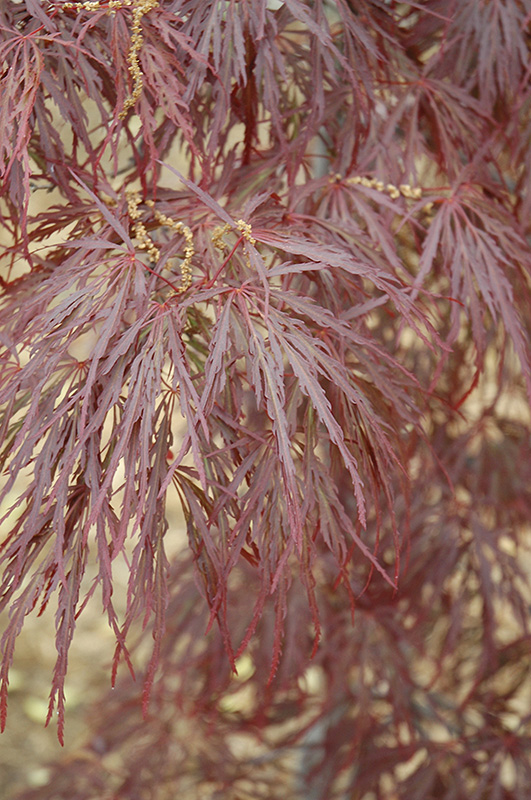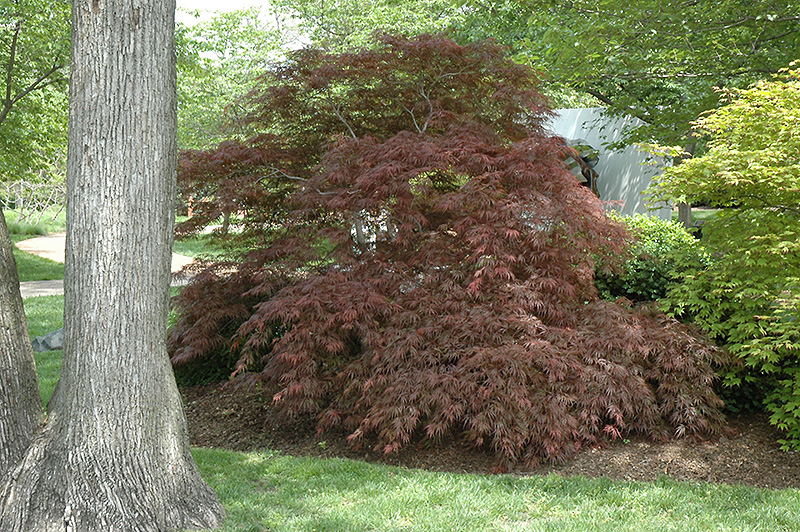Japanese Maple, Garnet Laceleaf Acer palmatum 'Garnet' Height: 12 feet Spread: 12 feet
Sunlight:
Hardiness Zone: 6a Other Names: Acer palmatum var. dissectum 'Garnet' Group/Class: Dissectum Description: Delicate lacy leaves and cascading habit; foliage begins orange in spring, turning burgundy during summer with more hints of orange-red if grown in the sun, fiery fall color. Needs afternoon shade and wind protection. Ornamental Features Japanese Maple, Garnet Laceleaf is primarily valued in the landscape or garden for its ornamental globe-shaped form. It has attractive burgundy deciduous foliage which emerges orange in spring. The small lobed palmate leaves are highly ornamental and turn an outstanding red in the fall. Landscape Attributes Japanese Maple, Garnet Laceleaf is a multi-stemmed deciduous shrub with a more or less rounded form. It lends an extremely fine and delicate texture to the landscape composition which can make it a great accent feature on this basis alone. This is a relatively low maintenance shrub, and can be pruned at anytime. It has no significant negative characteristics. Japanese Maple, Garnet Laceleaf is recommended for the following landscape applications; Planting & Growing Japanese Maple, Garnet Laceleaf will grow to be about 12 feet tall at maturity, with a spread of 12 feet. It has a low canopy with a typical clearance of 3 feet from the ground, and is suitable for planting under power lines. It grows at a fast rate, and under ideal conditions can be expected to live for 60 years or more. This shrub should be grown in a location with partial shade or which is shaded from the hot afternoon sun. It prefers to grow in average to moist conditions, and shouldn't be allowed to dry out. This plant should be periodically fertilized throughout the active growing season with a specially-formulated acidic fertilizer. It is not particular as to soil pH, but grows best in rich soils. It is somewhat tolerant of urban pollution, and will benefit from being planted in a relatively sheltered location. Consider applying a thick mulch around the root zone in winter to protect it in exposed locations or colder microclimates. This is a selected variety of a species not originally from North America.![]()
![]()
![]()
![]()
![]()
![]()
![]()
![]()
![]()
![]()
![]()



